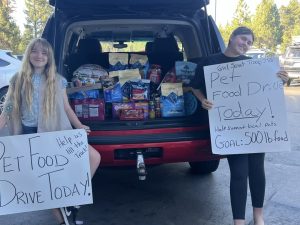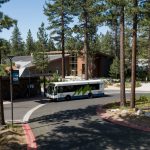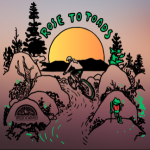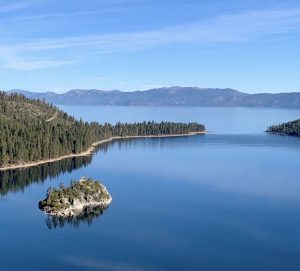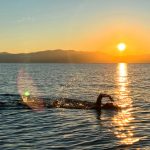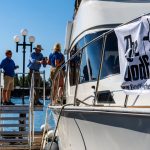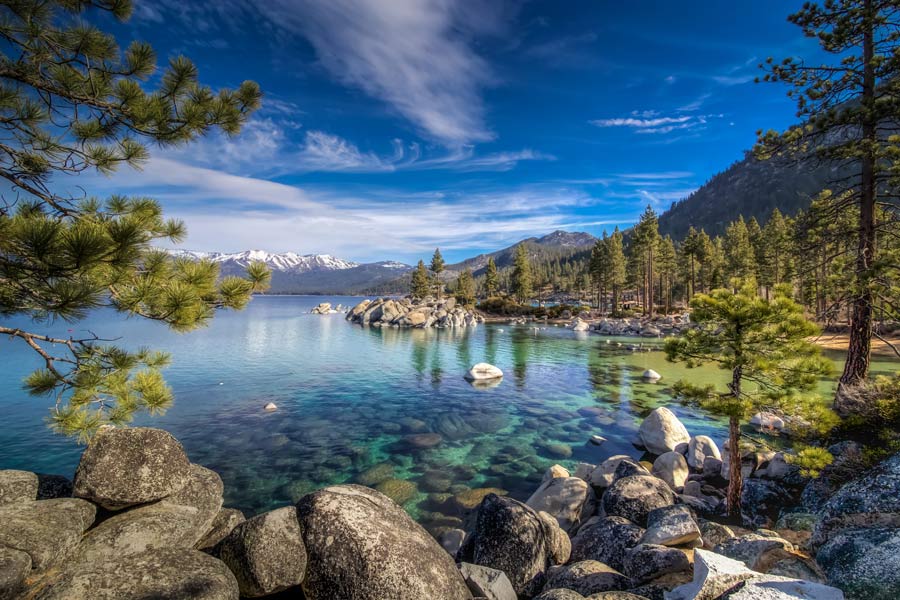Learn how to help prevent wildfires; A guide to fire restrictions in effect at Lake Tahoe
LAKE TAHOE, Calif./Nev. – Did you know that 95% of wildfires are caused by human activities? By understanding the common causes of wildfires and taking proactive steps to prevent them, we can all contribute to reducing the risk. Another way to reduce wildfire risk is to understand and follow fire restrictions and know when they are in effect so you can plan ahead. Here are some critical areas where human actions often lead to wildfires and tips on how to avoid them.
Equipment Use
Improper use of equipment can easily ignite a wildfire. Whether it’s a lawn mower, tractor, chainsaw, weed-eater, grinder, trimmer, or another power tool, taking proper precautions is essential.
- Time of Day and Conditions: Avoid using equipment during the hottest part of the day when conditions are the driest. Mow before 10 a.m. and always avoid windy or dry conditions. Remember, lawn mowers are for lawns, not for dry weeds or grass, because metal blades can spark fires when hitting rocks.
- Maintain Equipment: Regularly check and repair equipment to prevent sparks. In wildland areas, spark arresters are required on all portable gasoline-powered equipment. Keep exhaust systems, spark arresters, and mowers in proper working order and free of carbon buildup.
- Safe Equipment Use: Before conducting any grinding or welding operations in wildland areas, secure a permit and ensure you maintain a clear 10-foot radius. Keep a shovel and a fire extinguisher ready to use.
Vehicles
Vehicles and trailers can inadvertently start fires, especially when chains are involved. Follow these guidelines to ensure vehicle use does not contribute to wildfire risk.
- Secure Chains: Practice safe towing. Use proper fitting split fasteners (cotter pins) and hitch balls to secure chains and ensure they are not dragging, which can create sparks.
- Remove Dragging Parts: Ensure vehicles are properly maintained, with no parts dragging on the ground.
- Tire and Brake Maintenance: Maintain proper tire pressure to prevent driving on exposed wheel rims that can throw sparks. Regularly check and maintain vehicle brakes.
- Avoid Dry Areas: Do not drive or park on dry grass or brush, as hot exhaust pipes and mufflers can start fires. Regularly check the undercarriage for debris that could ignite.
Campfires
A campfire can quickly turn into a raging wildfire. Before setting up a campfire, always check local rules and restrictions. Some places prohibit campfires, especially when there’s a high risk of fires. Obtain a permit from local fire districts, CAL FIRE, or the USDA Forest Service, if required. And follow these steps to ensure campfires are safe.
- Designated Areas: Only build campfires in approved fire rings or pits in designated recreation sites.
- Clear Surroundings: Ensure there’s a 10-foot radius around the fire that is free of all flammable materials.
- Safety Tools: Keep safety tools like a shovel and a water source within arm’s reach. Always keep the fire small and manageable.
- Never Leave Unattended: Always keep an eye on campfires and ensure they’re completely extinguished before leaving. Use the “soak, stir, and feel” method to extinguish campfires:
- Soak: Soak the fire with water.
- Stir: Stir the fire with a shovel to wet any remaining embers and ash. Turn over any wood pieces and soak all sides thoroughly.
- Feel: Confirm the fire is out by feeling for remaining heat with the back of your hand and ensure all material is cool to the touch. Repeat, as needed.
Debris Burning
Improper debris burning can quickly escalate into a wildfire. Before burning debris, secure a burn permit from local fire agencies and confirm that there are no burn restrictions in the area. To find out if outdoor burning is allowed on a particular day, contact local air quality management districts.
- Permits and Regulations: Check local regulations and obtain any necessary permits before burning. Currently, all burn permits for outdoor residential burning are suspended in the Lake Tahoe Basin.
- Weather Conditions: Never burn on windy or dry days.
- Piles: Limit piles to 4 feet by 4 feet to manage the burn easily. Remove all flammable materials within 10 feet of the pile to prevent unintended spreading.
- Safety Tools: Have water, a shovel, and other firefighting tools nearby to quickly extinguish the fire, if needed.
- Supervise: An adult must be present to monitor the fire until it is completely out.
Fire Restrictions
Fire restrictions aim to prevent wildfires by limiting certain activities that could spark a blaze. Restrictions vary by location and fire danger level, but generally include limitations on campfires, smoking, and the use of certain equipment. The Tahoe Fire & Fuels Team has consolidated fire restrictions into an easy to use interactive map.
National Forests
Year-round fire restrictions are in effect on National Forest lands at Lake Tahoe. Campfires (wood, charcoal or any other solid fuels) are only permitted within permanently installed iron rings in campgrounds listed in Exhibit A of the Forest Order. Unless restricted, portable stoves with on/off valves are allowed with a valid permit.
State Parks
Fire restrictions may also be in effect on state lands in both California and Nevada.
- California State Parks: Fire restrictions vary from park to park. Generally, campfires are permitted within metal fire rings and grills in the campgrounds by registered campers. No wood or charcoal fires are permitted in day-use areas, and unless restricted, portable stoves are allowed in campgrounds and day-use areas.
- Nevada State Parks: Stage One fire restrictions are in place. Unless restricted, portable stoves are allowed. Read more about Nevada State Park fire restrictions.
- Other: Some communities and cities around Lake Tahoe may also have campgrounds and day use areas which may also have fire restrictions. Travelers should check with local fire protection districts for the most up-to-date restrictions.
Homes and Rentals
Fire restrictions on private property at Lake Tahoe are determined by local fire districts and municipalities. Generally, wood and charcoal BBQs, firepits and chimineas are not permitted on private property during fire restrictions. Some districts may allow wood and charcoal with a valid permit. Unless restricted, liquid petroleum gas, natural gas, propane, and pellet firepits and BBQs are allowed. To find your local fire district or municipality, view the map on the Tahoe Living With Fire website. Then visit the corresponding website to check private property fire restrictions in districts or municipalities.
- Please keep in mind all sources of open flames are prohibited during Red Flag Warnings and critical fire weather conditions. To check if a Red Flag Warning has been issued, visit the National Weather Service Fire Weather website.
- As a reminder, all personal use fireworks are illegal in the Lake Tahoe Basin because of the wildfire danger they pose to our communities and forests.
Each of us has a role to play in preventing wildfires. If you see illegal fire activity, say something. All illegal fire activity, including any contained or controlled fire in violation of fire restrictions, should be reported to 911 immediately. By taking these steps, we can significantly reduce the number of human-caused wildfires. Let’s work together to safeguard our neighborhoods, communities, and forests. Learn how to Get Prepared, Get Informed, and Get Involved at Tahoe Living with Fire.
Additional Wildfire Preparedness Resources and Information
- Tahoe Living With Fire: Helping Lake Tahoe Residents and Visitors Prepare for Wildfire
- Ready For Wildfire: Comprehensive information and tips on wildfire preparedness
- National Fire Protection Association: Offers wildfire safety resources and guidelines
- Ready.Gov: Information on wildfire preparedness

Support Local Journalism

Support Local Journalism
Readers around the Lake Tahoe Basin and beyond make the Tahoe Tribune's work possible. Your financial contribution supports our efforts to deliver quality, locally relevant journalism.
Now more than ever, your support is critical to help us keep our community informed about the evolving coronavirus pandemic and the impact it is having locally. Every contribution, however large or small, will make a difference.
Your donation will help us continue to cover COVID-19 and our other vital local news.
